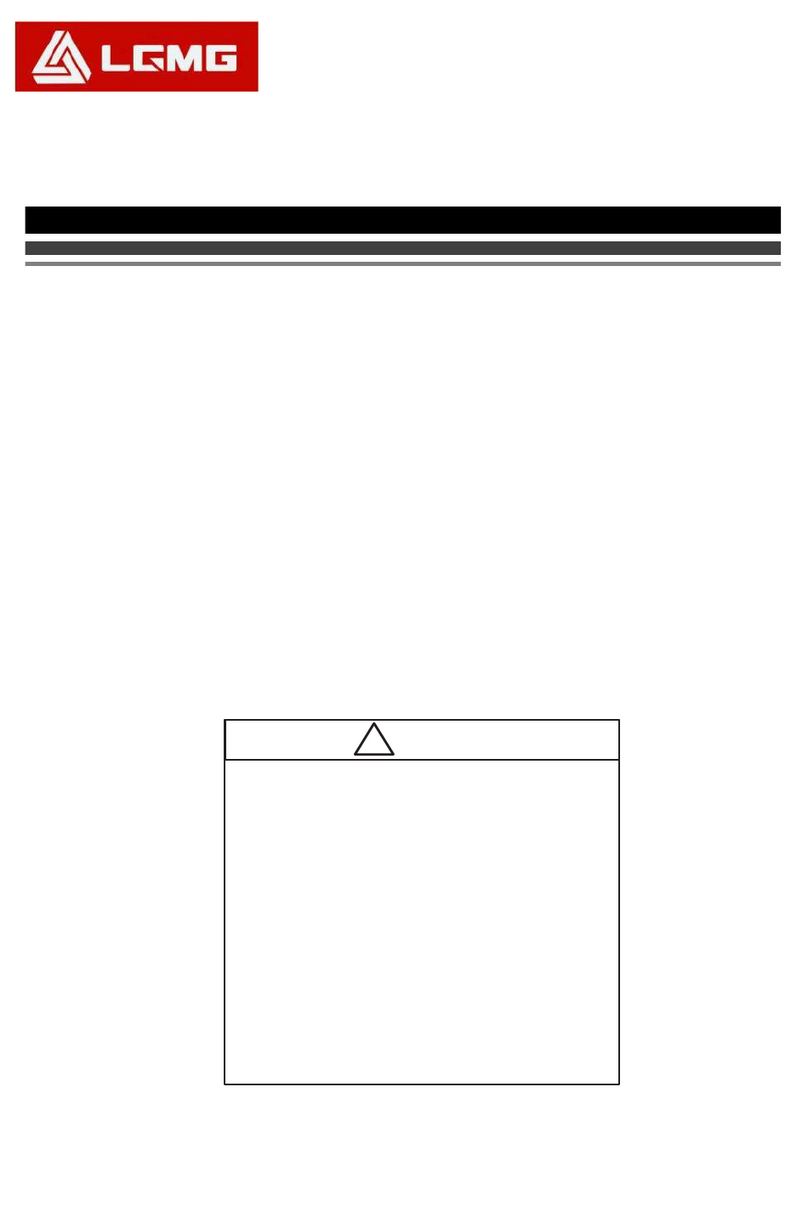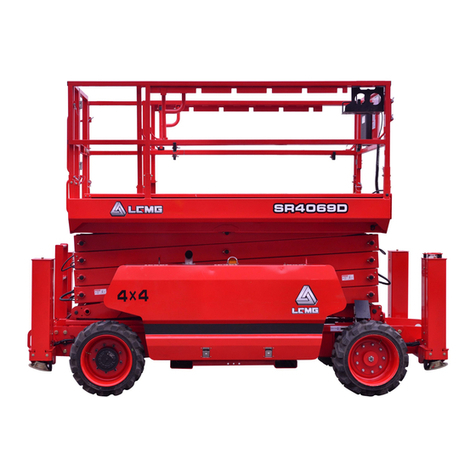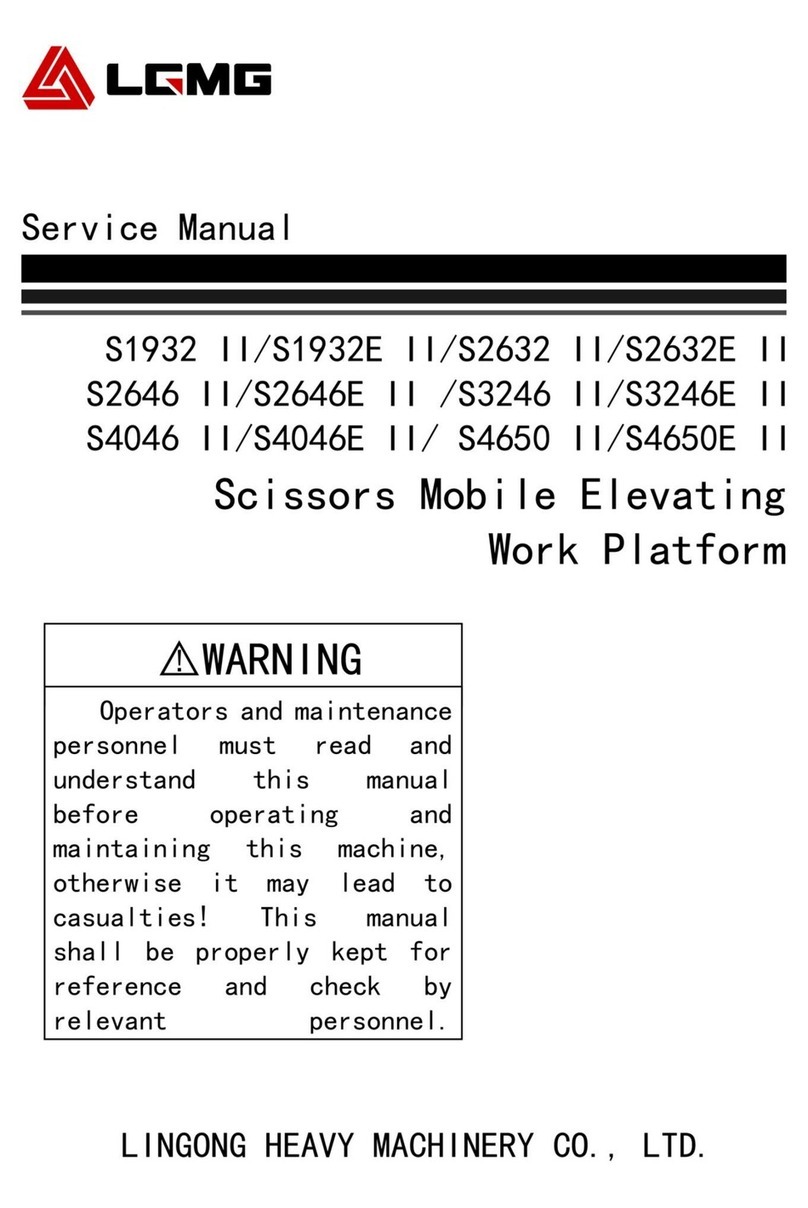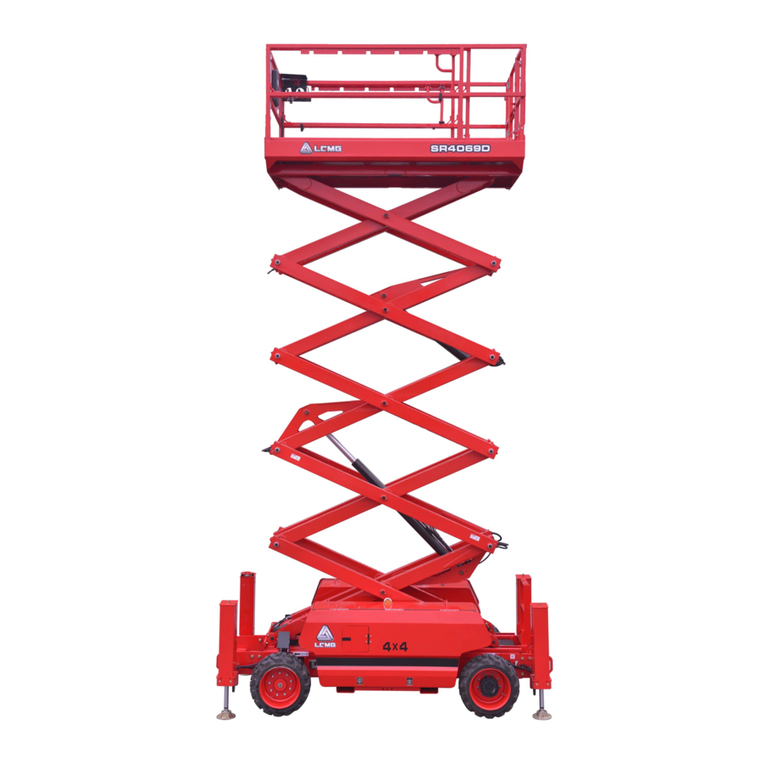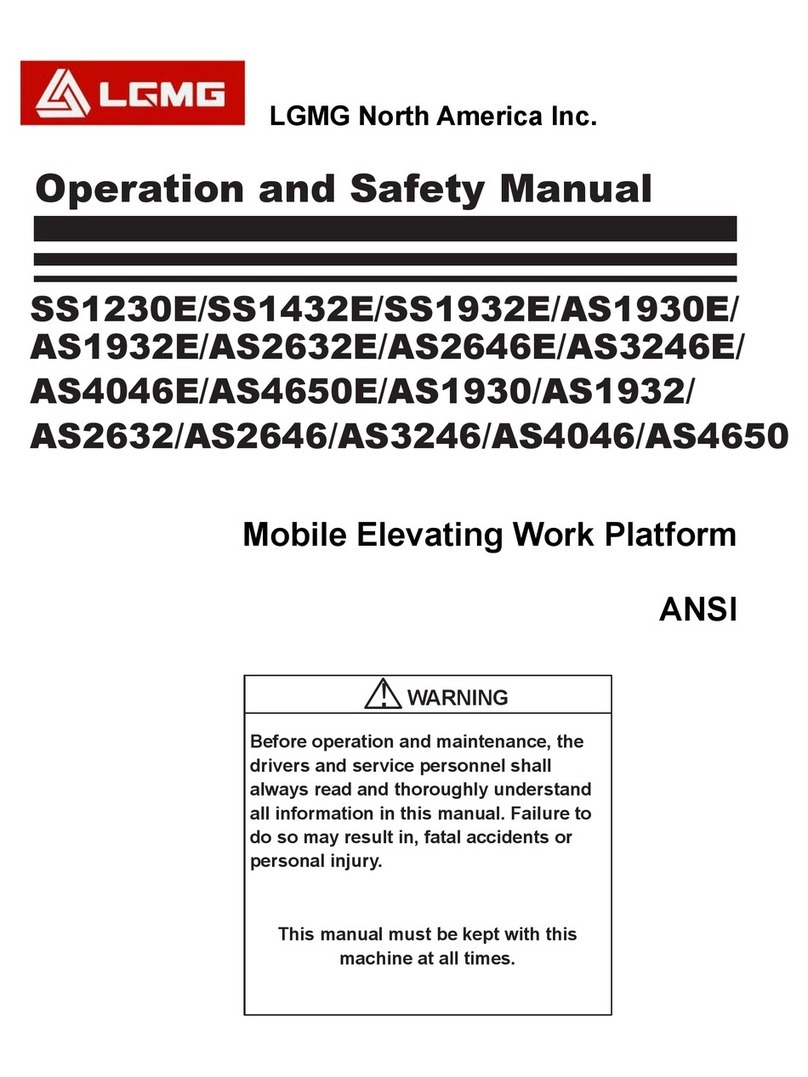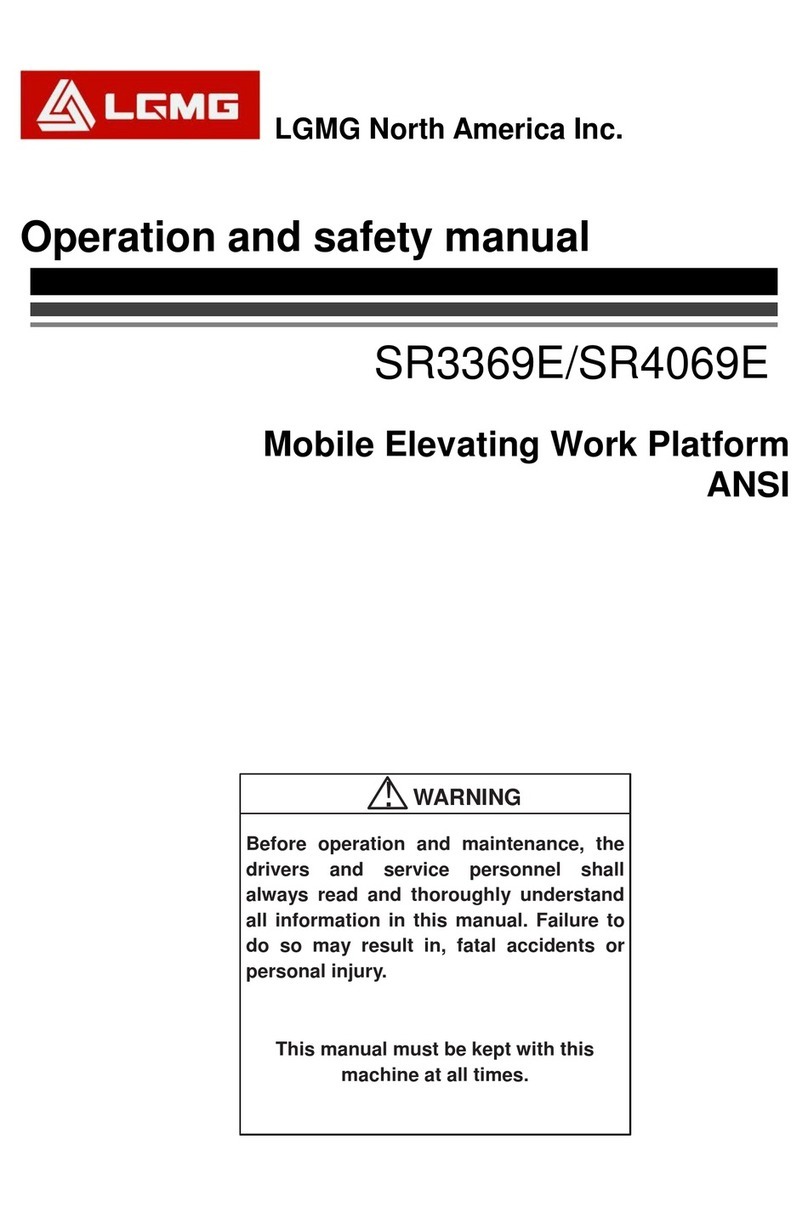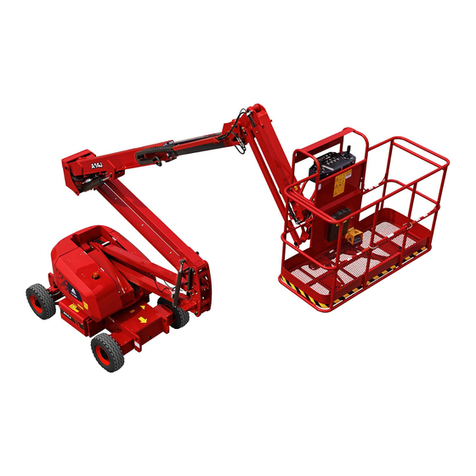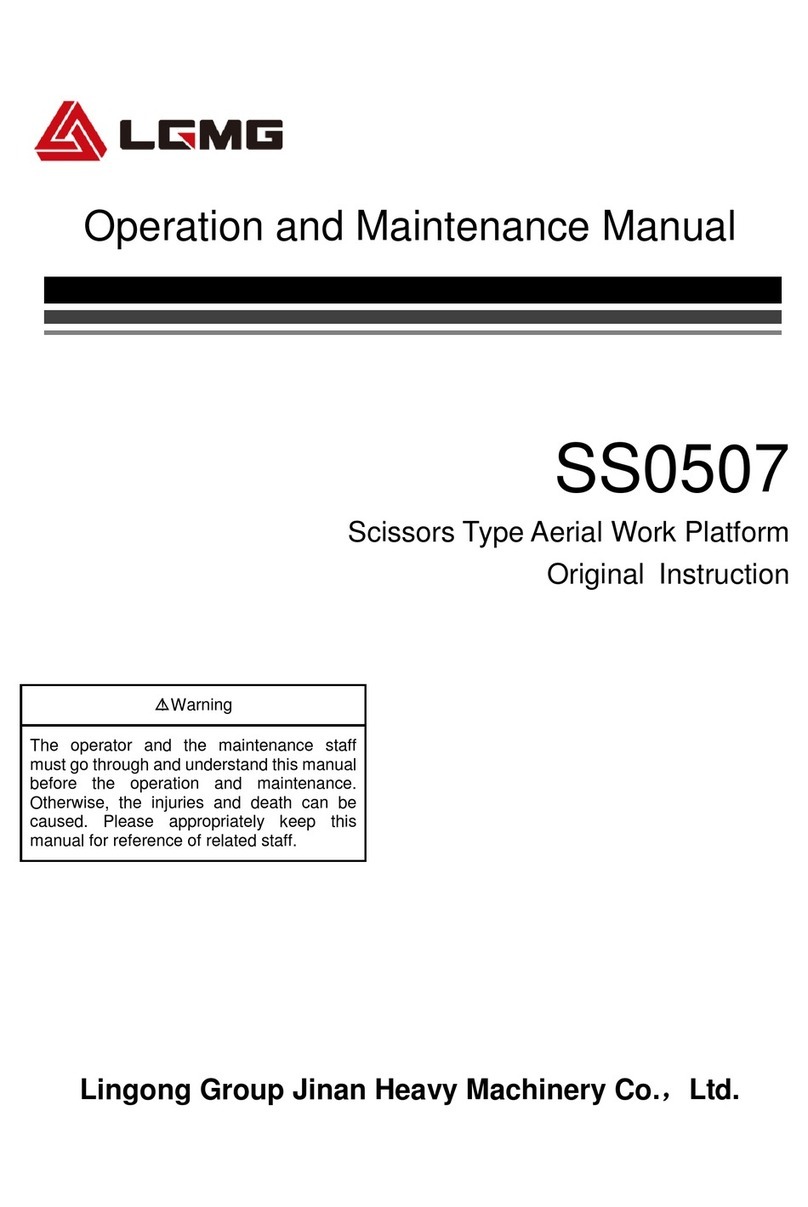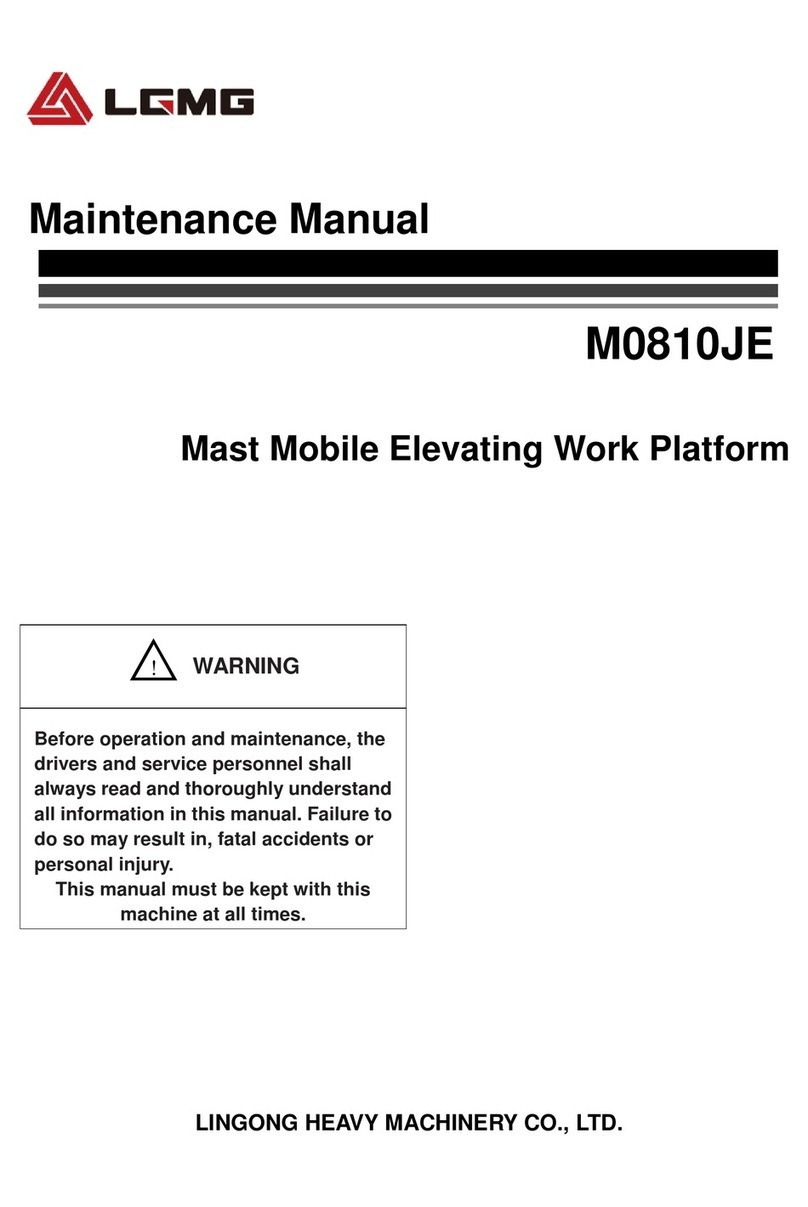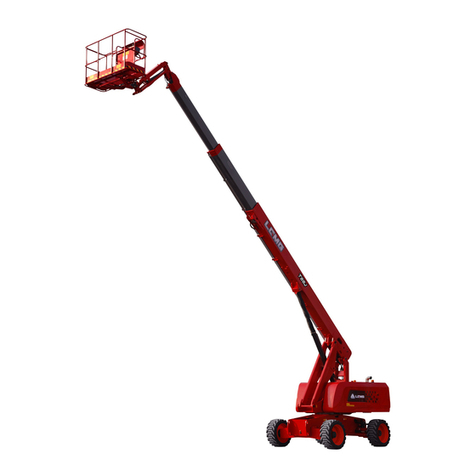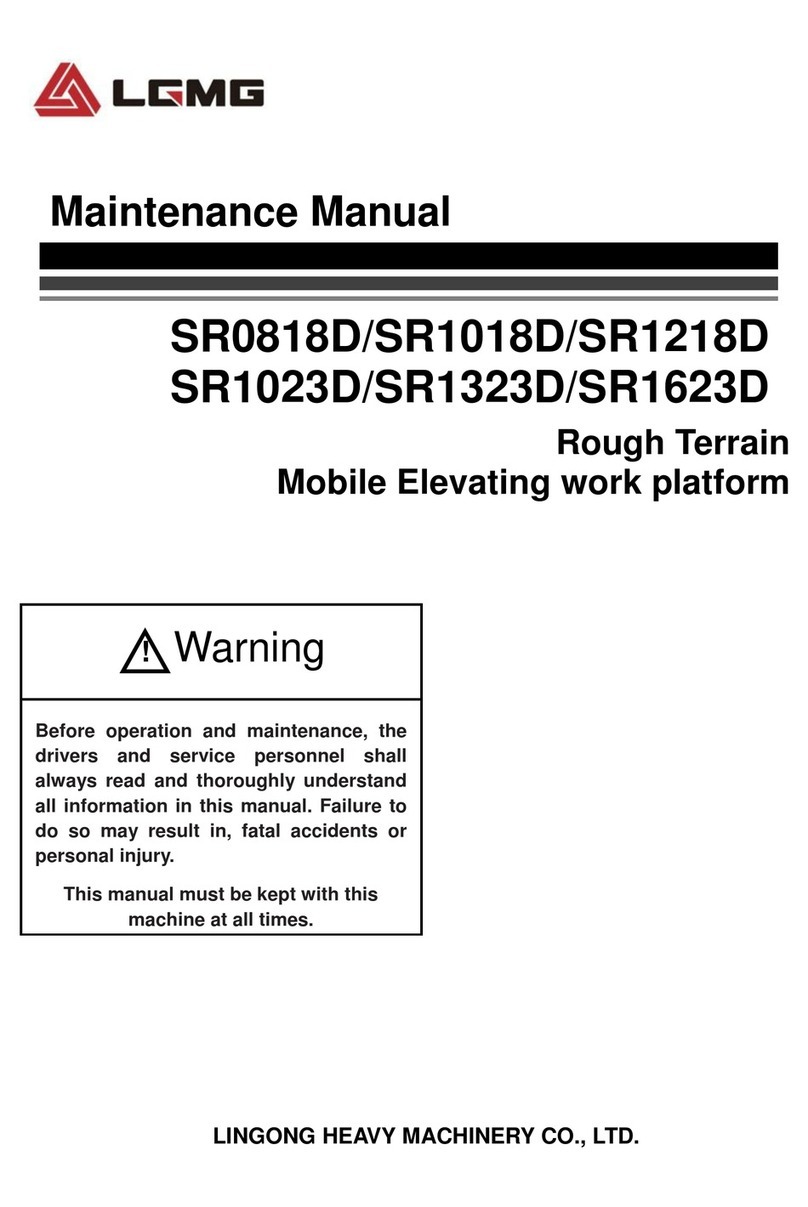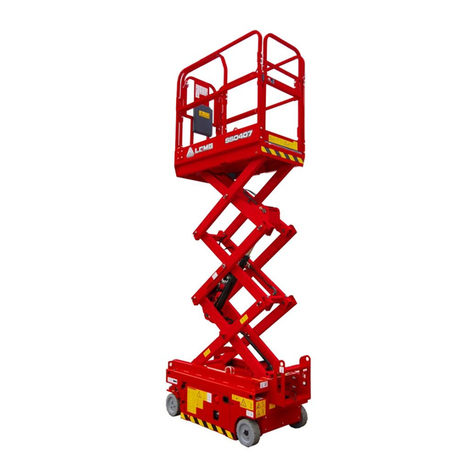
Maintenance Manual of Elevating Work Platform
5
6) Position 3: Lubrication of the tapered roller
bearing: the tapered roller bearing is full
and does not need to be lubricated again.
1.3.2 Market Maintenance
1) Position I: Lubrication of the roller path:
2) Quantity: Proper amount (18g is
recommended)
3) Lubricating frequency: Lubricate every year
or every 1,000 h, whichever occurs first.
4) Lubrication method: Continuously inject
lubricating grease into the injection port of
lubricating grease while rotating the slewing
reducer
5) Model of the lubricating grease: 3#
lubricating grease
1) Position II: Lubrication of the engaging
position between the worm and the slewing
bearing
2) Quantity: Proper amount (It is suggested to
inject a total of 400g of lubricating grease)
3) Lubricating frequency: Lubricate every
three months or every 150 h, whichever
occurs first.
4) Lubricating method: Continuously inject
lubricating grease into the injection port of
lubricating grease while rotating the slewing
reducer
5) Model of the lubricating grease: 3#
lubricating grease
1) Position III: Lubrication of the tapered roller
bearing:
2) Quantity: Proper amount (5g is
recommended at each position, and a total
of 10g for the two positions)
3) Lubricating frequency: Lubricate every year
or every 1,000 h, whichever occurs first.
4) Lubricating method: Direct lubrication
5) Model of the lubricating grease: 3#
lubricating grease
1.4Check Hydraulic Oil Level
Check it every 8 hours or every day.
Maintaining the hydraulic fluid at the proper oil
level is essential for the vehicle operation. If the
hydraulic oil is at an appropriate oil level, the
hydraulic components may be damaged.
Through daily inspections, the inspector can
determine changes in the hydraulic oil level
which can indicate problems with the hydraulic
system.
1) Make sure the boom is in the telescoped
position and then visually check the
hydraulic tank.
Result: The hydraulic oil is above the middle
scale of the level gauge and below the
maximum scale of the level gauge.
2) The hydraulic oil should be filled as needed.
No over-filling will be allowed. Hydraulic oil
Specification
The lowest
temperature>
-25℃
L-HV32 Low
temperature
hydraulic oil
-40℃<The
lowest
temperature≤
-25℃
L-HS32 Ultra
low
temperature
hydraulic oil
The lowest
temperature≤
-40℃
10# Aviation
hydraulic oil
1.5 Check for the Oil Level in
the Reducer
Check this step every 250 hours or a quarter.
The incorrect oil level in the reducer shall lead to
the reduction of equipment performance and
continuous use will result in damage to
components.
1) Drive the equipment rotating until a plug is
at the highest point.
2) Remove the other plug and check the oil
level.
Result: The oil level shall be the same as the












